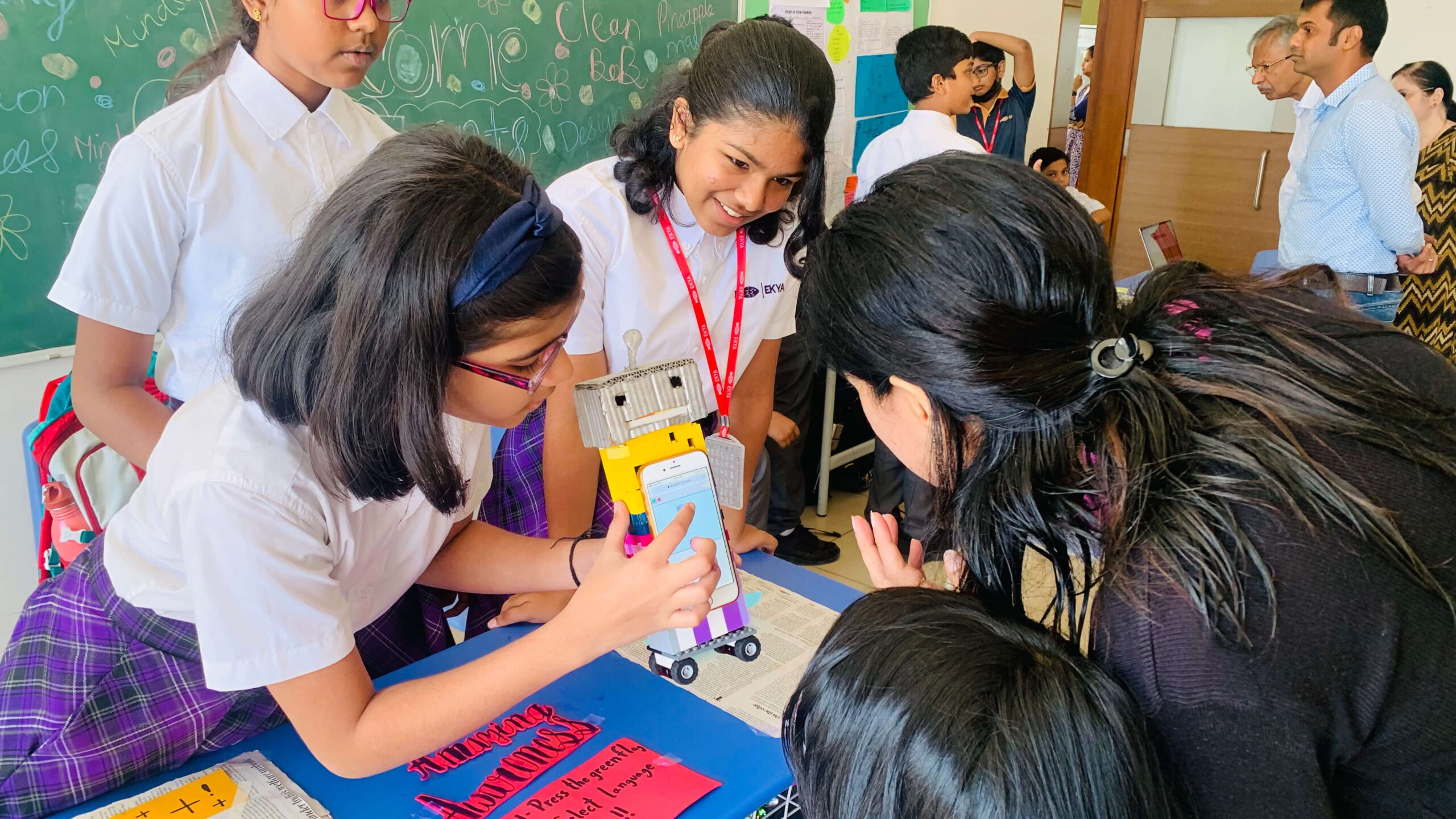Think of your childhood days and imagine reliving them in a 2024 classroom. But instead of snoozing through lectures about the periodic table or the Pythagorean theorem, you find yourself in the middle of a bustling marketplace in Bangalore. Schools in Bangalore like Ekya NAVA along with their research-driven curriculum provide unique learning experiences to its students where both educators and learners embark on a journey of learning
The Pillars of Purpose-Based Learning
Real-World Engagement – The Heartbeat of PBL
Purpose-based learning establishes an engagement with real-life situations. An active use of PBL can be witnessed at Stanford’s Impact Labs; where students do more than just studying environmental issues. Impact labs at Stanford are R&D platforms that encourage students to create tangible solutions for real-life problems.
Similarly, Schools like Ekya are getting in on the action with their Service Learning Program, with students tackling local issues that teach them the curriculum in a way they’ll never forget because they’re living it, breathing it, and impacting it.
Student-Centred Learning Objectives
Purpose-based learning isn’t just about learning for today—it’s about setting up a love for learning that lasts a lifetime. It allows students to look into a problem thoroughly and come up with a solution.
Students at Ekya become problem solvers in the real-world with the help of Design Thinking in their curriculum. It enables students to experience each creative process in the context of problem-solving with empathy as the key aspect of the process.

Interactive and Collaborative Learning Environment
Purpose-based learning is the pioneer of collaboration. The inclusion of this approach directly results in students actively cooperating and collaborating with one another to come up with solutions. Programs like Quest at Ekya develop essential process skills like predicting, observing, hypothesising, and communicating, empowering students to navigate and understand the world with a well-rounded set of abilities.
Integration of Technology and Resources
Purpose-based learning thrives in the presence of modern tools and technology. At Ekya NAVA, high-end tools and resources are available for the students to turn ideas into reality.
Continuous Feedback and Adaptation
And, feedback in PBL isn’t about waiting for a paper to come back marked in red. It’s ongoing, it’s constructive, and it helps you adapt your projects day by day. This is about learning that evolves with you, through projects like the Tiny House Project and beyond.
Facilitated Learning: Educators shift from traditional lecture-based approaches to a more facilitative role, helping to guide students through the learning process rather than directing it. This approach encourages active learning and critical thinking by posing problems and scenarios that require students to engage directly with the material.
Continuous Assessment: No high-stakes testing at the end of a term; but ongoing feedback and assessments that help students improve continuously. This might include real-time feedback during projects, regular reviews of students’ work, and adaptive assessments tailored to individual learning paths. This method helps educators address learning issues on-the-fly and adjust instructional strategies to meet students’ needs.
Adaptive Teaching Methods: Adaptive teaching is pivotal in PBL, allowing educators to tailor learning experiences to the needs of diverse student groups. This includes using technology and data to personalise lessons and assessments, ensuring that all students, regardless of their starting point, can achieve their full potential.
Purpose-based Learning at Ekya Schools
At Ekya, the curriculum is centred around the Understanding by Design (UbD) Framework which emphasises deep
Conclusion
At Ekya, the curriculum is centred around the Understanding by Design (UbD) Framework which emphasises deep understanding through inquiry-based learning. Here, students engage in projects that encourage them to explore concepts deeply using collaborative and critical thinking skills. The use of digital tools like Google Workspace and Schoology enhances learning and supports the development of future-ready skills. These structured learning experiences are designed to challenge students and promote lifelong learning.
